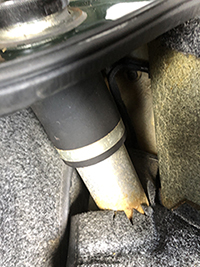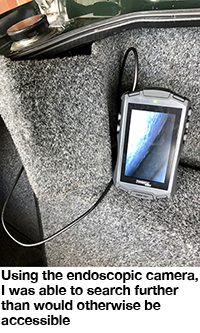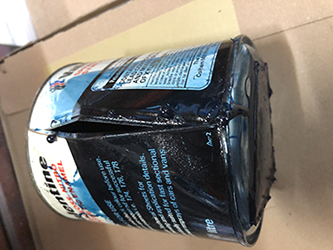Any personal information provided to or to be gathered by bindt.org and ndtnews.org is controlled primarily by The British Institute of Non-Destructive Testing, Midsummer House, Riverside Way, Bedford Road, Northampton NN1 5NX, UK.
The information we learn from customers helps us personalise and continually improve your shopping experience at bindt.org and ndtnews.org. We use the information to handle orders, deliver products and services, process payments, communicate with you about orders, products, services and promotional offers, update our records and generally maintain your accounts with us.
Information about our customers is an important part of our business and we are not in the business of selling it to others.
How Secure Is Information About Me?
- We work to protect the security of your information during transmission by using Secure Sockets Layer (SSL) software, which encrypts information you input.
- We reveal only the last five digits of your credit card numbers when confirming an order. Of course, we transmit the entire credit card number to the appropriate credit card company during order processing.
- We maintain physical, electronic and procedural safeguards in connection with the collection, storage and disclosure of personally identifiable customer information. Our security procedures mean that we may occasionally request proof of identity before we disclose personal information to you.
- It is important for you to protect against unauthorised access to your password and to your computer. Be sure to sign off when you finish using a shared computer.
The British Institute of Non-Destructive Testing
Midsummer House
Riverside Way
Bedford Road
NORTHAMPTON
NN1 5NX
United Kingdom
Tel: +44 (0)1604 438300
Fax: +44 (0)1604 438301
E-mail: info@bindt.org
Web: www.bindt.org
The British Institute of Non-Destructive Testing is a Limited Company (Reg. No. 969051, England) and a Charity (Reg. No. 260666). Registered Office: Midsummer House, Riverside Way, Bedford Road, Northampton NN1 5NX, UK.
VAT Reg. No. 581 2105 68
 People have asked me how I come up with the different topics that appear in these memoranda and often it is from small talk with the volunteers that visit the BINDT headquarters. This source has been absent for some time, so I will have to rely on a recent personal experience.
People have asked me how I come up with the different topics that appear in these memoranda and often it is from small talk with the volunteers that visit the BINDT headquarters. This source has been absent for some time, so I will have to rely on a recent personal experience. engine, following the fuel lines as much as possible using the camera and additional lighting. Again, I did not find anything that resembled a fuel leak. I then decided I had better have a more comprehensive look underneath the car. As mentioned, there is very limited ground clearance and I am also much less agile than I used to be. With a combination of good lighting, inspection mirrors and the endoscopic camera, I was able to trace the fuel line to the fuel pump and on towards the engine bay, yet still did not find anything of concern. By this point, I had ripped my t-shirt and picked up a few minor cuts and abrasions but, strangely, I was enjoying performing the enhanced visual inspection.
engine, following the fuel lines as much as possible using the camera and additional lighting. Again, I did not find anything that resembled a fuel leak. I then decided I had better have a more comprehensive look underneath the car. As mentioned, there is very limited ground clearance and I am also much less agile than I used to be. With a combination of good lighting, inspection mirrors and the endoscopic camera, I was able to trace the fuel line to the fuel pump and on towards the engine bay, yet still did not find anything of concern. By this point, I had ripped my t-shirt and picked up a few minor cuts and abrasions but, strangely, I was enjoying performing the enhanced visual inspection. In conclusion, I approached the task with the appropriate equipment to perform a visual inspection, which proved to be successful. I need to organise my collection of possibly useful tins and other items and dispose of any I no longer need in a responsible manner. Cheap endoscopic cameras do provide a usable image but an understanding of what is being viewed is essential. Do not automatically blame the car just because it is 27 years old. Consider the environmental conditions, especially the weather. Being a private investigation at home, the need for risk assessments and PPE was different to that of a commercial operation. The removal of the tin and cleaning of the area, along with good ventilation, removed the source of the odour.
In conclusion, I approached the task with the appropriate equipment to perform a visual inspection, which proved to be successful. I need to organise my collection of possibly useful tins and other items and dispose of any I no longer need in a responsible manner. Cheap endoscopic cameras do provide a usable image but an understanding of what is being viewed is essential. Do not automatically blame the car just because it is 27 years old. Consider the environmental conditions, especially the weather. Being a private investigation at home, the need for risk assessments and PPE was different to that of a commercial operation. The removal of the tin and cleaning of the area, along with good ventilation, removed the source of the odour.
Comments by members
This forum post has no comments, be the first to leave a comment.